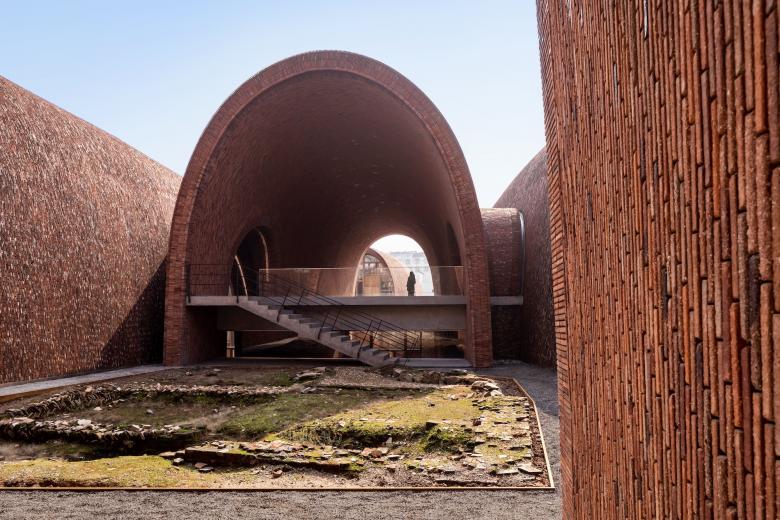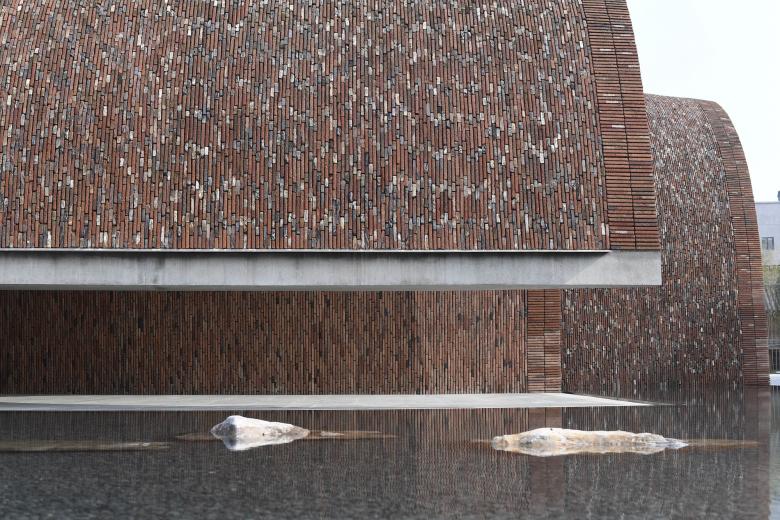The 'Experimental Archaeology' of the Imperial Kiln Museum
The eagerly anticipated Jingdezhen Imperial Kiln Museum, designed by Studio Zhu-Pei, was completed recently. Composed of nine barrel-vaulted elements structured in concrete, the building stands out for its brick cladding that is composed of a mix of new bricks and recycled bricks, the latter from kilns in the Chinese city known for the making of porcelain.
The firm of Zhu Pei began designing the Jingdezhen Imperial Kiln Museum in 2016, and later World-Architects was hoping for a completion as early as 2018. While we were off by a couple years, the completed building looks well worth the wait.
The museum is located in a historic part of Jingdezhen and is sited adjacent to the Imperial Kiln ruins surrounding many ancient kiln complexes. In turn, the design of the museum uses its materiality to express the long history of this traditional craft that is so important to the city.
Eduard Kögel describes the bricks covering the vaults in his review of the Imperial Kiln Museum:
"The use of recycled bricks from the original kilns has a long tradition in Jingdezhen. Because the brick vaults of the kilns have to be demolished every two or three years in order to maintain a certain heat output, the residents recycled the material for their building projects. The bricks, marked by the heat, are like a document of the porcelain production that has always shaped the appearance of the city. The new vaults for the museum are made of poured concrete, which is clad with bricks inside and out. The architects draw attention to the recycled bricks from the kilns which are partially melted due to the extreme heat, by adding new bricks to clearly show the difference. This places history in relationship to the present day and presents it for visitors in a kind of experimental archaeology."
So new and old bricks are mixed in a somewhat regular pattern, with the former drawing attention to the latter. The difference between new and recycled bricks is clearly evident in a close-up of one of the vaults, with the longer orange bricks popping from the other mottled bricks.
An even closer view reveals just how much the old bricks were affected by the heat of the kilns, thereby allowing the building's architecture — not just its contents — to tell a story. To Kögel, "the burnt-out bricks tell an [...] important story of porcelain production with its economic, technical and cultural aspects, which gives the city its history and its future."
Visit Studio Zhu-Pei's profile to see documentation of Jingdezhen Imperial Kiln Museum as completed and in design form.




